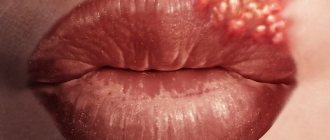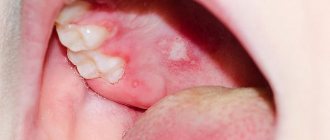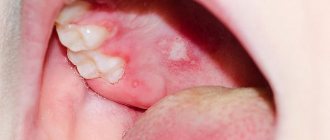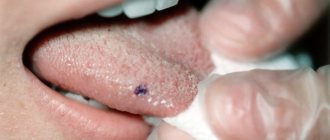Viruses are around us. Some of them suddenly appear and paralyze the normal life of the entire planet, others have been known for a long time, exist everywhere, often even are in the human body, but do not manifest themselves. The second option is the herpes virus.
Currently, 8 types are known, and the human body reacts differently to each of them. Some cause shingles or chickenpox, and only the first two appear less severely, most often just as “blisters” on the lips [1].
This disease was mentioned in literary works and historical documents 2000 years ago. But it was only in the 40s of the last century that the human herpes simplex virus was discovered, studied and described.
WHO indicates that in 2012, the number of people infected with the first type of virus alone was about 3.7 billion. At that time, 67% of the world's population was infected with it. The spread of this virus is trending to increase. Many people carry herpes and don't even know it [2].
Another problem is the high infection rate of the healthy population, mainly young, working age.
In the world, from 16 to 800 people are infected annually, and in Russia from 40 to 80 people per 100 thousand population “Features of herpes viruses” Ph.D. Peradze Kh. D., Ph.D. Sukhoruk A. A.
Types of herpes simplex virus and their features
If we talk about such a manifestation of herpes as a “cold” on the lips, then it is caused by the first two types of virus: HSV-1 and HSV-2. They are very contagious and contribute to the appearance of small bubbles - vesicles - on the mucous membranes. The favorite site of manifestation of HSV-1 is the oral cavity, and HSV-2 usually affects areas in the genital area.
Herpes disease does not always appear only on the lips or genitals. Other areas of the body may also be affected: fingertips, cornea, skin, internal organs and systems, even the spinal cord and brain.
Causes of herpes
The herpes virus is constantly in the body, but it is passive. Its appearance can be provoked by a decrease in immunity and, as a result, illness. Herpes can appear not only on the lips, but also on other mucous membranes - nose, eyes, genitals.
In addition to decreased immunity or a cold, the following factors can affect the appearance of herpes:
- severe hypothermia or overheating;
- stressful situation;
- mechanical injuries of the lip;
- severe intoxication of the body;
- excessive consumption of alcohol or tobacco;
- lack of vitamins in the body;
- pregnancy or hormonal imbalances;
- HIV;
- diabetes;
- contact with a sick person.
Signs of the presence of herpes virus in the body
Anyone who has ever encountered such a problem knows how herpes manifests itself. Typically, herpes on the lips occurs in several stages and is accompanied by unpleasant symptoms.
- Itching and tingling . A few days before the herpetic rash appears, itching, burning or tingling in the lips may occur.
- Bubble formation . Small bubbles filled with clear liquid usually form at the border of the red border of the lips and the skin around the mouth. Herpes can also be located near the nose, ears or on the cheeks.
- Crusts and weeping . The vesicles burst, the liquid pours out, and shallow open wounds remain on the mucous membrane of the lips, which eventually become covered with a crust.
Most often, this is how the body reacts to the reappearance of symptoms, when the immune system has already developed an algorithm for how to get rid of herpes. The first manifestation of herpes on the lips can be more complicated and be accompanied by additional symptoms:
- fever;
- ulcers on the gums;
- sore throat;
- headache;
- muscle pain;
- enlarged lymph nodes.
How does herpes develop?
Herpes has several stages of development:
- at the first stage, unpleasant sensations appear in the lip area, already at this time it is necessary to begin treatment of herpes in order to prevent the transition to the next stage;
- at the second stage, inflammation of the mucous membrane appears, small blisters may appear;
- at the third stage, the blisters enlarge and may burst, leaving small ulcers in their place;
- The fourth stage is characterized by the appearance of scabs at the site of ulcers, which disappear upon healing.
It is important to monitor your body, and if other symptoms appear and your condition worsens, contact the clinic for competent help.
Laboratory diagnosis of herpes
The insidiousness of this virus is that there are no signs of herpes for a long time. A person may not be aware of his infection until the first vesicle appears on the lips.
But it is quite easy to detect it in a laboratory. For this, the PCR (polymerase chain reaction) method is used, which detects even a small amount of viral particles in biological material. It is suitable for early diagnosis, as it allows diagnosing the disease regardless of the timing of infection, even when the body has not developed an immune response [3].
If you examine antibodies, the enzyme-linked immunosorbent assay (ELISA) is considered the most reliable. The body of the infected person begins to produce protective immunoglobulins G and M. IgM antibodies appear immediately after infection, and IgG antibodies are formed only after the first relapse.
Tests establish the presence of the virus and determine which of the two types it belongs to [4, 5].
Methods of infection
There are several main ways of contracting a herpes infection.
Straight way
The virus passes to a healthy person from a sick person through direct contact. A prerequisite for transmission is the active skin manifestation of the herpes virus on the lips or other parts of the body. This route of transmission is possible through kissing (herpes on the lips), sexual contact (genital herpes), through hands, when the virus is actively released from herpetic vesicles.
Indirect transmission route
In this case, infection occurs through personal hygiene items, dishes, and cosmetics from a person with herpes at the stage of spreading the virus. For prevention, it is enough to use individual personal hygiene items - a toothbrush, comb, cosmetics - lipstick, creams, cosmetic pencils [2, 6].
Risk factors for colds on the lips
Once infected, the virus remains in the human body forever. An effective treatment for herpes has not yet been invented to help eliminate it from the body. However, you can try to reduce the frequency of herpes on the lips if you avoid the causes of virus activation. Frequent herpes on the lips can be caused by:
- stress;
- fatigue;
- systemic diseases, ARVI;
- hormonal changes;
- allergies;
- exposure to the sun or local hypothermia [7].
WHAT YOU NEED TO KNOW ABOUT HERPES SIMPLE
Key Facts
There are two types of herpes simplex virus: herpes simplex virus type 1 (HSV-I) and herpes simplex virus type 2 (HSV-II).
HSV-I herpes on the lips and facial area
transmitted primarily through oral contact and causes oral herpes (symptoms of which may include a “fever sore”), but can also cause genital herpes.
HSV-II herpes in the genital area
is one of the sexually transmitted infections and causes genital herpes.
More than 90% of the world's population are carriers of the herpes virus. Infection with both HSV-I and HSV-II lasts for life.
The frequency of herpes on the lips varies from person to person and can recur from 2 to 12 times a year. Most cases of herpes are oral and genital.
Typically, the virus settles in the body at 3-5 years of age, but does not appear until puberty.
Transmission routes:
- Autoinfection.
The virus is transmitted from infected areas of the body to uninfected areas. For example, contact lens wearers can transfer the herpes virus to the eye area by wetting the lenses with infected saliva instead of a solution.
- When contacting another person through a kiss
For infection to occur through a kiss, the virus needs 2 conditions:
so that the carrier has an active phase of herpes (moreover, it can be asymptomatic)
so that the partner has a predisposition to infection: an abundance of saliva, small wounds.
- Upon contact with a contaminated surface
The virus is able to survive for some time outside its host: in a humid environment, at a temperature of 37°. That is, it is possible to become infected by drinking from the same glass or using the same lipstick. It is theoretically possible, but rare, to become infected with genital herpes when sitting on plastic surfaces (toilet, locker room bench), because On plastic surfaces under favorable conditions, the virus survives for about 4 hours.
Stages of herpes
Precursor stage
It usually begins with a tingling, itching and burning sensation on the lips. Duration from several hours to 1 day.
Hyperemia stage
Literally on the same day as the tingling sensation, swelling and redness of the lip occurs. The condition is usually accompanied by itching and lasts on average 1-2 days.
Bubble stage
A group of several bubbles is formed, which merge with each other into one painful bubble filled with lymph. This usually happens on the second day and is accompanied by very painful sensations.
Stage of erosion formation
On day 3, the blisters transform into ulcers and pustules, which then form a sore. Usually it is gray in color with a bright red ring around it. The liquid released from the sore contains virus particles in a concentration of 1 million per 1 ml. and is highly contagious
Crust formation stage
From days 4 to 9, the sore dries out and crusts over. In this case, the pain becomes less, but severe itching appears. The sore may fall off in parts and bleed. Herpes begins to heal from the inside, the sore becomes smaller.
Healing stage
On days 9-11, the wound heals and heals. However, redness may persist for another two days. During this period, the virus returns to a dormant state, in which it can remain until it is activated again by risk factors.
Treatment
The most effective medications for people infected with HSV are antiviral drugs such as acyclovir, famciclovir and valacyclovir. They help relieve symptoms and reduce the frequency of their occurrence, but do not lead to a complete cure.
Prevention
HSV-I herpes on the lips and facial area
HSV-I is most contagious during the onset of oral herpes symptoms, but it can also be transmitted when no symptoms are felt or observed. Individuals with active symptoms of oral herpes should avoid oral contact with others and sharing objects that have come into contact with saliva. They should also abstain from oral sex to prevent herpes from spreading to their partner's genitals. People with symptoms of genital herpes should avoid sexual intercourse while they are experiencing symptoms.
Consistent and correct use of condoms can help prevent the spread of genital herpes. However, condoms can only reduce the risk of infection, since symptoms of genital herpes can appear in areas not protected by a condom.
Individuals already infected with HSV-I cannot become infected again, but they remain at risk of infection with HSV-2, which affects the genital area.
Pregnant women with symptoms of genital herpes should inform health care providers. Preventing new infections with genital herpes virus is especially important for women in late pregnancy, since this is the period when the risk of developing neonatal herpes is highest.
HSV-II herpes in the genital area
People with a genital infection caused by HSV should abstain from sexual activity while symptoms of genital herpes appear. HSV-II is most contagious when lesions appear, but it can also be transmitted when no symptoms are felt or observed.
Systematic and correct use of condoms can help reduce the risk of spreading genital herpes. However, condoms provide only partial protection because HSV can be found in areas not protected by a condom. Medical male circumcision can provide men with lifelong partial protection against HSV-II, as well as HIV and human papillomavirus (HPV).
Individuals with symptoms suggestive of genital HSV infection should be tested for HIV infection, and those living in areas with high HIV prevalence should be offered more focused HIV prevention interventions, such as pre-exposure prophylaxis.
Pregnant women with symptoms of genital herpes should inform health care providers. Preventing new infections with genital herpes virus is especially important for women in late pregnancy, since this is the period when the risk of developing neonatal herpes is highest.
Treatment methods for herpes
Currently, doctors' recommendations on how to treat herpes are limited to a regimen that helps to quickly get rid of the manifestations of herpes on the lip, other part of the body, or helps prevent the onset of the active phase of the disease.
Sometimes local antiviral drugs are sufficient for therapy. Ointments and creams that help against herpes contain one of the following components:
- acyclovir;
- valacyclovir;
- pharmaciclovir;
- penciclovir.
These active ingredients are produced under different brands, and all are aimed at effectively treating the manifestations of herpes.
If local treatment of herpes on the lips is ineffective, it is recommended to take tablet medications that suppress the replication of viruses in cells. They are believed to be more effective. In special cases, with large affected areas, when internal organs and systems are affected, complex treatment in a hospital is possible [3, 4, 8].
Reviews about the treatment method
This method of combating the symptoms of herpes is not suitable for everyone. Reviews about the use of this method are varied. Toothpaste helps some people very well, while others are convinced that its use is useless. Based on the reviews of patients, we can draw the following conclusions about the use of the drug in the fight against herpetic eruptions:
- you should not expect a quick effect;
- it is better to combine this method of treating the rash with taking antiviral drugs;
- with massive lesions of the lips, the method is ineffective.
The effect of using this treatment method can be both positive and negative. But if there are no alternative solutions to the problem, it is worth using this method of treating a herpetic rash, taking precautions.
Prevention of infection and manifestations of the disease
It is not always possible to quickly get rid of herpes on the lips if it has entered the active stage, but you can strive to prevent the spread of the virus and minimize its manifestation.
Prevention of herpes consists of following basic sanitary and hygienic recommendations:
- keep your hands clean;
- use personal hygiene items;
- Avoid skin-to-skin contact with people with active disease.
If exacerbations occur frequently, this is a signal that the immune system needs help: it may be necessary to take a long-term antiviral drug as prescribed by a doctor [2, 9]. If the onset of the disease is provoked by sunlight or low temperatures, it is advisable to use special protective creams on the lip area and the skin around them.
Only a qualified doctor knows how to cure herpes in each specific case. But on your own, you can prevent further spread of the viral infection and reduce the number of relapses.
Medical expert: Oleg Sergeevich Shchekin
Last updated: July 21, 2022
List of sources
- Peradze Kh. D., Sukhoruk A. A. Features of herpes viruses. // URL: https://cyberleninka.ru/article/n/osobennosti-gerpes-virusov (date of access: 04/09/2020).
- WHO fact sheet. Herpes simplex virus. // URL: https://www.who.int/ru/news-room/fact-sheets/detail/herpes-simplex-virus (access date: 04/09/2020).
- Vasiliev A. N., Fedorova N. E., Klimova R. R., Adieva A. A. Improving the diagnosis of herpesvirus infections. // URL: https://cyberleninka.ru/article/n/sovershenstvovanie-diagnostiki-gerpes-virusnyh-infektsiy (date of access: 04/09/2020).
- Kazmirchuk V. E. Clinic, diagnosis and treatment of human herpesvirus infections: monograph / V. E. Kazmirchuk, D. V. Maltsev - K.: Phoenix, 2009 - 248 p.
- Kharlamova F. S., Egorova N. Yu., Guseva L. N., Guseva N. A., Novosad E. V. Viruses of the herpes family and immunity. // URL: https://cyberleninka.ru/article/n/virusy-semeystva-gerpesa-i-immunitet (date of access: 04/09/2020).
- Isakov V. A., Arkhipova E. I., Isakov D. V. Human herpesvirus infections: a guide for doctors. – St. Petersburg: SpetsLit, 2013 – 670 p.
- Lutsenko M. T., Gorikov I. N. Some information about the morphology of herpes viruses and their properties. // URL: https://cyberleninka.ru/article/n/nekotorye-svedeniya-o-morfologii-gerpes-virusov-i-ih-svoystvah (date of access: 04/09/2020).
- Zuikova I. N., Shulzhenko A. E., Kuzmin V. N. Recurrent herpes. A new approach to treatment. // URL: https://cyberleninka.ru/article/n/retsidiviruyuschiy-gerpes-novyy-podhod-k-lecheniyu (date of access: 04/09/2020).
- Kalinina N. M., Davydova N. I. The role of immunotropic therapy in increasing the effectiveness of treatment of herpesvirus infections. // Terra Medica. – 2009 – No. 1(56). – P.17-22.







